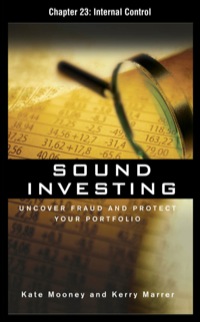
1 Question 2 Joe has a business where he makes chairs. In producing the chairs, he makes use of a building and a machine. Joe rents a building for R30,000 per month and rents a machine for R20,000 a month. Those are his fixed costs under contract for a minimum of 12 months. His variable cost per month is given in the accompanying table. VC MC of chair AVC of chair ATC of chair R5 0 R5,000 R8,000 R9,000 R3 R1 RS Quantity of chairs 0 1000 2000 3000 4000 5000 6000 7000 8000 9000 10000 R6 R14,000 R20,000 R33,000 R49,000 R72,000 R99,000 R150,000 R5.00 R4.00 R3.00 R3.50 R4.00 R5.50 R7.00 R9.00 R11.00 R15.00 R55.00 R29.00 R19.67 R16.00 R14.00 R13.83 R14.14 R 15.25 R16.56 R20.00 R13 R16 R23 R27 R51 a) There is free entry into the industry, and anyone who enters will face the same costs as Joe. Suppose that currently the price of a chairs is R23. What will Joe's profit be? Is this a long- run equilibrium? If not, what will the price of chairs be in the long run? [6] Consider Joe's chair company described above. Assume that chair production is a perfectly competitive industry. For each of the following questions, explain your answers. b) What is Joe's break-even price? What is his shut-down price? [4] c) Suppose the price of a chair is R2. What should Joe do in the short run? [2] d) Suppose the price of a chair is R6. What is the profit-maximising quantity of chairs that Joe should produce? What will his total profit be? Will he produce or shut down in the short run? Will he stay in the industry or exit in the long run? [6] e) Suppose instead that the price of chairs is R20, which of the listed output levels is the profit- maximising quantity of chairs that Joe should produce? What will his total profit be now? Will he produce or shut down in the short run? Will he stay in the industry or exit in the long run? [4] f) What does your answer in e) above convey to you about the MR = MC rule? [2] 2 1 Question 2 Joe has a business where he makes chairs. In producing the chairs, he makes use of a building and a machine. Joe rents a building for R30,000 per month and rents a machine for R20,000 a month. Those are his fixed costs under contract for a minimum of 12 months. His variable cost per month is given in the accompanying table. VC MC of chair AVC of chair ATC of chair R5 0 R5,000 R8,000 R9,000 R3 R1 RS Quantity of chairs 0 1000 2000 3000 4000 5000 6000 7000 8000 9000 10000 R6 R14,000 R20,000 R33,000 R49,000 R72,000 R99,000 R150,000 R5.00 R4.00 R3.00 R3.50 R4.00 R5.50 R7.00 R9.00 R11.00 R15.00 R55.00 R29.00 R19.67 R16.00 R14.00 R13.83 R14.14 R 15.25 R16.56 R20.00 R13 R16 R23 R27 R51 a) There is free entry into the industry, and anyone who enters will face the same costs as Joe. Suppose that currently the price of a chairs is R23. What will Joe's profit be? Is this a long- run equilibrium? If not, what will the price of chairs be in the long run? [6] Consider Joe's chair company described above. Assume that chair production is a perfectly competitive industry. For each of the following questions, explain your answers. b) What is Joe's break-even price? What is his shut-down price? [4] c) Suppose the price of a chair is R2. What should Joe do in the short run? [2] d) Suppose the price of a chair is R6. What is the profit-maximising quantity of chairs that Joe should produce? What will his total profit be? Will he produce or shut down in the short run? Will he stay in the industry or exit in the long run? [6] e) Suppose instead that the price of chairs is R20, which of the listed output levels is the profit- maximising quantity of chairs that Joe should produce? What will his total profit be now? Will he produce or shut down in the short run? Will he stay in the industry or exit in the long run? [4] f) What does your answer in e) above convey to you about the MR = MC rule? [2] 2







